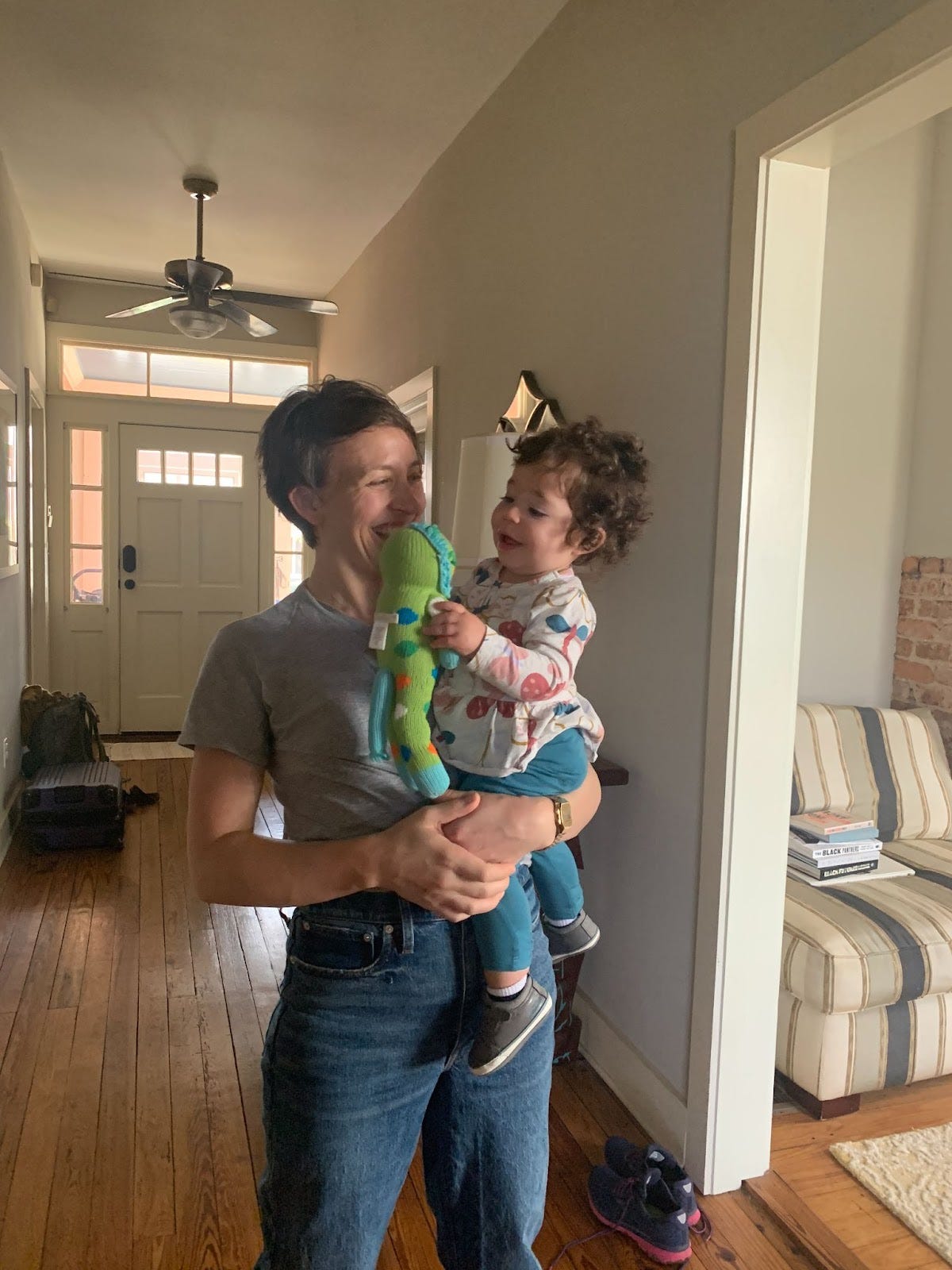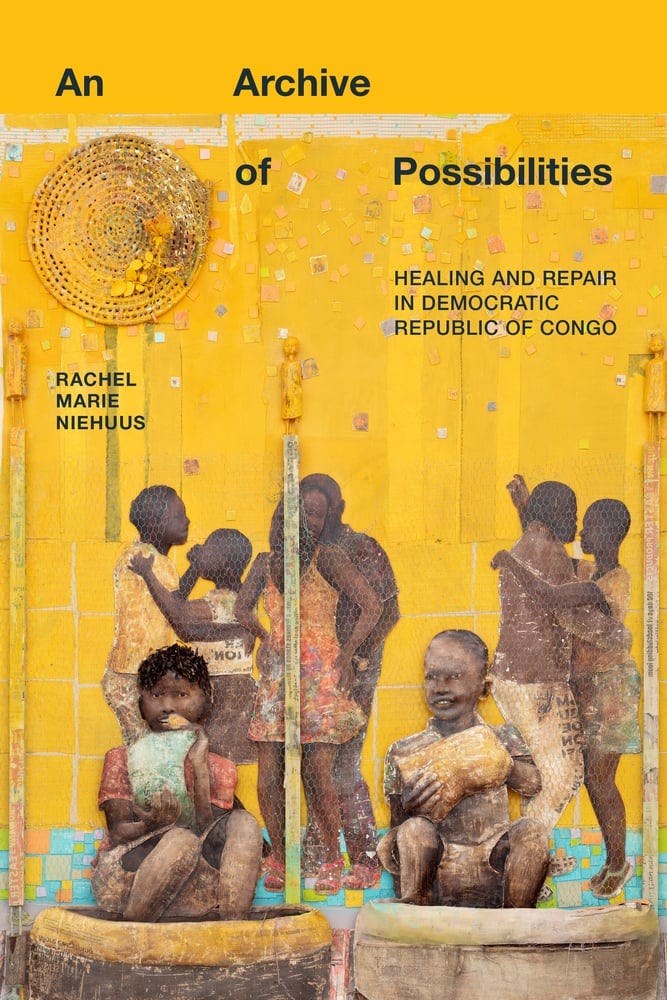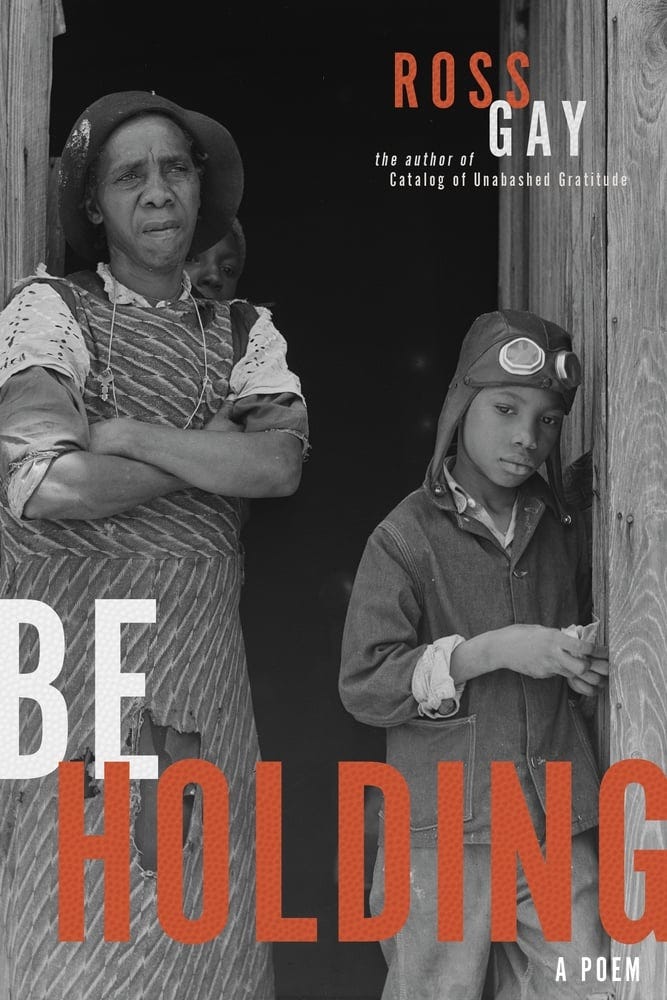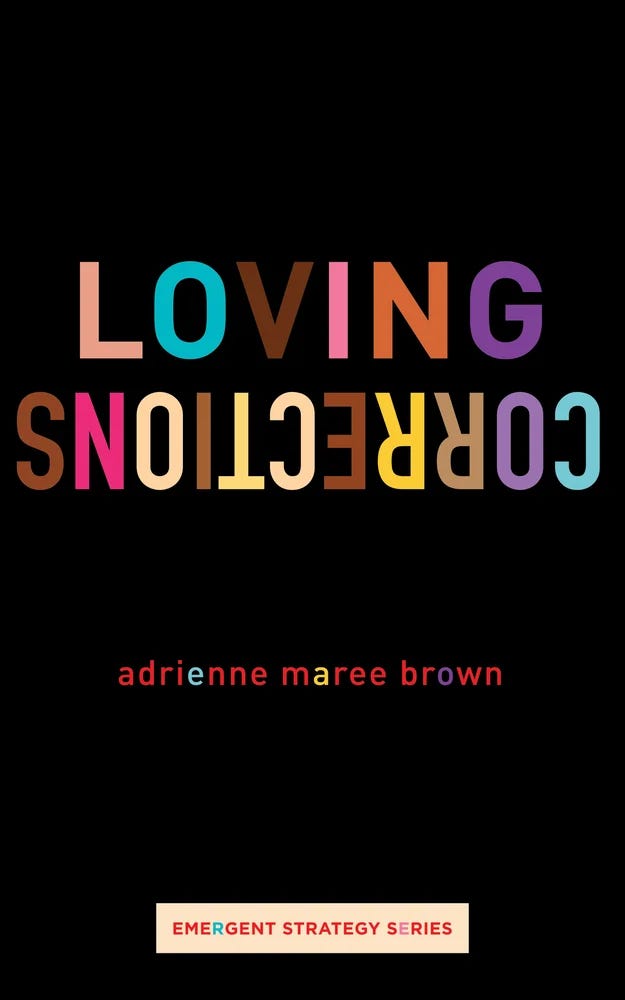“Social isolation can be as deadly as smoking 15 cigarettes a day, and the pandemic only intensified this issue. People are craving authentic, in-person connection.”
-Ben Bradbury
In this week’s newsletter:
Reading Rhythms
3 Episodes on: Tourism
Scholarly Sources: Rachel Niehuus
Reading Rhythms
Looking for an incredible community of book lovers? Reading Rhythms hosts book parties in dozens of cities and multiple countries. At their events, you can read with others, listen to authors, and meet other people who love books as much as NBN listeners do. Read (and listen) to our interview with Ben Bradbury, Co-Founder and Chief Bookworm of Reading Rhythms!
Q: What is Reading Rhythms and how did it start?
A: Reading Rhythms is a global community of readers who gather through in-person "reading parties" to connect over their shared love of reading.
We started in June 2023 with a simple idea: reading is better together. It was just 10 friends on a Brooklyn rooftop. No vision, no plan – just readers seeking a moment of connection in a busy world. We were all looking for a way to read more consistently, and what began as a hobby project quickly revealed a deeper truth: people are craving both meaningful connection and mindful moments in their increasingly digital lives.
Fast forward to today, and we've welcomed nearly 20,000 readers across nearly 20 cities worldwide, from New York to London to Milan. We've hosted reading parties in iconic venues like Times Square, Edge NYC (100 floors up!), and Hudson Yards Plaza, and gained support from major brands and authors including Nicholas Sparks, The New York Times, and Good Morning America.
What makes me most proud is that we've facilitated over 30,000 collective mindful hours filled with genuine human connection. Our mission is simple yet powerful: creating belonging through reading.
Q: What is a typical Reading Rhythms event like?
A: Reading Rhythms party isn't your typical book club. There's no homework or pressure - just connection.
Here's how it flows:
Arrival & Check-in (6:45-7:15pm): Readers arrive, receive a name tag, and settle in. It's a chance to grab a drink, find the perfect spot, and chat with fellow readers before we begin.
Welcome & Introduction (7:15pm): One of our Chapter Leads welcomes everyone and explains how the evening will unfold. We often include a brief breath work moment to help everyone get present and centered.
First Reading Block (7:20-7:50pm): We read silently for 30 minutes to a curated playlist that sets the perfect mood. This is where the magic happens – a room full of strangers, all immersed in their own literary worlds yet sharing a collective experience.
One-on-One Discussions (7:50-8:05pm): After reading, we invite everyone to turn to someone nearby and discuss what they're reading. Books are the best icebreaker for bookworms - asking "What are you reading?" creates space for intentional conversation.
Second Reading Block (8:05-8:35pm): Another 30 minutes of peaceful, uninterrupted reading.
Group Discussions (8:35-8:55pm): We break into small groups around theme words that reflect how people are feeling, what they're reading, or what's on their mind.
Close & Open Social (8:55pm): We wrap up the structured portion, and many readers stay to continue conversations, exchange contact information, and attend their next reading party together.
What makes our events special is the balance of quiet introspection and social interaction. We aim to create an environment where both introverts and extroverts of all backgrounds feel comfortable.
Q: Why do you think so many people are interested in attending reading parties?
A: I believe we're addressing a perfect storm of cultural needs right now.
First, we're in the midst of a loneliness epidemic. Social isolation can be as deadly as smoking 15 cigarettes a day, and the pandemic only intensified this issue. People are craving authentic, in-person connection.
Second, many of us are experiencing digital burnout. We're constantly bombarded with content, much of it designed to keep us scrolling. Reading parties offer a deliberate departure from screen time – a chance to engage with physical books and real people.
Third, there's the "third space" phenomenon. With the decline of traditional community gathering places, people are seeking new venues to connect outside their homes and workplaces. Reading Rhythms creates spaces where readers can belong.
Finally, I think there's been a renaissance in reading popularity. The pandemic helped many rediscover their love of books, but maintaining a consistent reading practice can be challenging. Our events provide the accountability to help people find time to read in their busy lives.
Q: How has Reading Rhythms changed your reading habits?
A: It's been a total shift! The main reason behind starting was to read more in a busy city, and I'm proud to now read almost daily.
Beyond the quantity, the quality of my reading experience has evolved too. I'm more present when I read now. At our events, there's something powerful about the collective energy of a room reading silently together – it creates this immersive bubble that helps you sink deeper into your book.
I get most of my book recommendations from the community nowadays. Conversations with our community members have introduced me to genres, authors, and perspectives I might never have discovered on my own. I'm currently reading The Dragonbone Chair, a fantasy epic recommended from another reader in our community which I'm loving.
Perhaps most importantly, reading is no longer a solitary activity for me – it's become a social one. I look forward to discussing what I'm reading, hearing others' perspectives, and making connections through shared literary experiences.
Q: What are the biggest challenges for organizing RR?
A: Running a global community centered around in-person events comes with its share of hurdles! Scaling our community culture across chapters is one for sure. Keep quality high in New York is one thing, and we're now doing that in 20+ cities. Our events average a 9.2 Net Promoter Score right now, and we want to keep that nice and high going forwards.
Venue sourcing and management is always a challenge - new spaces are opening and treasured ones sadly closing pretty regularly. We aim to have our finger on the pulse of the next hot space, so we can throw a reading party that feels fresh to our community.
Balancing growth with intimacy presents its own dilemma, too. We want to make Reading Rhythms accessible to as many people as possible, but we're equally committed to preserving the intimate, connection-focused atmosphere that makes our events special. This tension informs everything from how we price tickets, to structuring our events, to how we approach partnerships.
Q: What is your favorite event you've produced so far?
A: Oh man, it's like choosing a favorite child! If I had to pick, I'd say the Times Square reading party with Good Morning America, featuring a special guest appearance by NYT bestselling author Nicholas Sparks. We had hundreds of bookworms gathered on the steps at 6:30am on a Monday morning, coffees in hand, waiting to get a copy of Nicholas's new bestseller, Counting Miracles. Creating that moment of peaceful stillness right at the crossroads of America was truly special to be a part of. Seeing Counting Miracles hit number 1 on the New York Times bestseller list was pretty cool, too!
Q: How can our readers get involved?
A: The best way to experience Reading Rhythms is firsthand is through a reading party. We have Chapters all across the United States, and are always adding new ones. You can find all our upcoming events on our website. And if we're not in your area yet, we'd love to bring Reading Rhythms to your community! You can fill out our Chapter Lead interest form on our website, and our team will reach out about the application process.
Listen to Ben’s full NBN interview to learn more about how he founded Reading Rhythms!
3 Episodes On: Tourism
Did you watch this season of The White Lotus? Piper Ratliff was just one of many international tourists who have come to Thailand in recent years to learn more about Buddhism. Listen to Brooke Schedneck discuss her book, Religious Tourism in Northern Thailand: Encounters with Buddhist Monks where she examines the growth of religious tourism in the city of Chiang Mai in northern Thailand. She demonstrates that while this phenomenon may constitute yet another case of the commodification of Buddhism, religious tourism in Buddhist Chiang Mai can also be seen as another way in which Thai Buddhism is adapting to a more globalized, market-oriented society.
Then check out historian and documentarian William Gow’s discussion of his recently published book, Performing Chinatown: Hollywood, Tourism, and the Making of a Chinese American Community He examines Los Angeles in the 1930s and 1940s, arguing that Chinatown and Hollywood represented the two primary sites where Chinese Americans performed racial difference for popular audiences during the Chinese exclusion era. William shows that Americans in Los Angeles used these performances in Hollywood films and in Chinatown for tourists to shape widely-held understandings of race and national belonging during this pivotal chapter in U.S. history.
In Delhi, former street children guide visiting tourists around the streets that they used to inhabit and show how the NGO they work for tries to resocialize the current street children. What social, cultural and economic structures are in the backdrop of slum tourism in Delhi? Why are emotions and personal stories important to understand in slum tours? In this episode of the Nordic Asia podcast, Dosol Nissi Lee is joined by Tore Holst to discuss slum tourism and affective economies in Delhi, focusing particularly on the emotional labor of the former street children and the ethical position of tourists.
Scholarly Sources: Rachel Niehuus
As an anthropologist and a surgeon, Rachel Niehuus conducts health research with a unique approach. For years, her projects were located within the health systems in Democratic Republic of Congo: on Ebola, fistula care, and medical humanitarianism there. Her first book, An Archive of Possibilities: Healing and Repair in Democratic Republic of Congo explores repair and healing in DRC amidst repetitive wounding. As she describes the multitude of ways that Congolese cohabitate with violence, Rachel argues that healing amidst persistent displacement, death, and war involves a reimagining of global relationality, building anew after anti-blackness.
Q: What are you reading right now?
A: As I start researching fugue states in the hospital, I have been thinking about what forms of writing dreamworlds require and have returned to writing classes to explore this in more depth. In my current class, I am reading magical realism. The pieces we are using to dig deeper into the craft of writing that which must be approached obliquely are all novel and exciting. Standard Loneliness Package by Charles Yu is perhaps my favorite so far.
Q: What is your favorite book or essay to assign to give to people and why?
A: My favorite theoretical pieces are those which directly challenge my understanding of the world, which blow my mind; my favorite pleasure reading explores beauty. Saidiya Hartman’s Wayward Lives, Beautiful Experiments does both of these— and is also a total joy to read. For those located in the medical world, Chris Adrian’s “Grand Rounds” continues to astonish me.
Q: Is there a book you read as a student that had a particularly profound impact on your trajectory as a scholar?
A: Hugh Raffles’ Insectopedia made me understand how powerful affect can be. His exploration of disgust is the most vivid that I have read.
Q: Which deceased writer would you most like to meet and why?
A: Lauren Berlant– what a force, what a loss. Their conception of a properly political concept of love has changed the ways I live and the ways I love. It would be really special to tell them how much those ten pages, and the writing that followed, have meant to me and mine; and then to ask them to explain their thinking on sexual violence more, for even after rereading their last book, I am still left with questions.
Q: What's the best book you've read in the past year?
A: Because I am paid to be a surgeon, most of the reading I do is clinical–scanning through patients’ charts for details that might change my management, scrolling back and forth through CT scans until the shades of grey become meaningful, dissecting scientific papers for what they have left out, what they didn’t consider. And so, the pile of books that I aspire to read often grows and grows until it is so tall that it overwhelms my drive to sleep, and, in a fit of insomnia, I ravenously devour books heavy with layers of dust. Which is to say that I finally read Ross Gay’s Be Holding a few months ago, and I cannot get it off my mind.
Q: Have you seen any films that left an impression on you recently?
A: Maybe recently is relative? When writing An Archive, I thought a lot about the silences that existed in my fieldwork– what they meant and how to write them. I assumed that the next project would have different questions, but I again find myself wondering about silence– the silences during wound care, the silent stares of hypoactive delirium. It’s been a while since I’ve watched it, but I remember Paris, 13th District being this extraordinary exploration of how much silence can hold.
Q: What do you plan on reading next?
A: Michael Taussig has come out with another book, Corpse Magic: Echoes Active in the Slayer-Slain Nexus. I watched a talk that he gave when he was still working on the material and was mesmerized by the way that he uses his deep understanding of violence in Colombia to shed new light on why police violence in the US has become so banal. It was such a fresh perspective to something that, despite the academic attention it has received, feels under-theorized; and especially helpful for me as I take care of victims of gun violence (police and otherwise) when they make it to the hospital.
Q: What sparked your interest in healing and repair in the eastern Democratic Republic of Congo?
A: Initially, I was interested in war— a war with no end, violence that had changed shapes and hands but continued to affect a people for 250 years. In Loving Corrections, adrienne maree brown connects our culture’s fascination with violence with a too-clear, often problematic sense of justice. I was certainly guilty of this. It was only later that I was able to see efforts of repair amidst the death and destruction. Once I began seeing repair and healing, I realized that these attempts to exit the violence of anti-blackness were everywhere in Congo. At some point, I realized that creating an archive of the possibilities engendered by these attempts at repair and healing was the most important task I could imagine, for Congo and for the globe.
Q: How does your work as an anthropologist inform your work as a surgeon and vice versa?
A: For years now, I have worked as a surgeon, and anthropology has been a hobby, a love, the reading and writing that keeps me up at night, which iteratively challenges my understanding of care and pushes me towards a transformational practice of medicine. My current chair and division chief at UNC are visionary, and with their encouragement I am working to bring my anthropological practice into my clinical work. Right now, this looks like starting a new ethnographic research project with patients in our surgical ICU; developing a predictive model for vulnerability in surgical patients; leading a reading class on care with surgical residents; and mentoring medical students working towards a scholarly concentration in the medical humanities. I am hopeful that these are but the beginnings of a more integrated career.
Q: Perhaps related, can you share a bit about why you decided to do an MD-Ph.D. and do you have any advice for anyone considering this path?
A: My initial motivation to pursue an MD-PhD was financial: my parents were frugal, and they believed that paying for a medical education was a bad financial decision. I had worked in biomedical labs through college in work-study programs, and I knew I didn’t want to be pipetting for another five years—and so I scoured the NIH’s list of possible PhD programs for an alternative and came across anthropology. But a PhD takes a lot of time and a lot of grit, and at some point, the pursuit became intensely personal to me. Within a year or two of formal training, I began to believe in the anthropological task of studying human interaction so that we might take better care of each other. The journey to becoming a board-certified surgeon, intensivist, and a published anthropologist has been a long one, and it has also been incredibly rich. For anyone considering this path, find good mentors. My PhD adviser, Ian Whitmarsh, continues to push me to think and live differently.
Q: Who should read An Archive of Possibilities: Healing and Repair in Democratic Republic of Congo and why?
A: Everyone. For the book pitch, I believe I wrote “graduate students, humanitarians and medical professionals, those thinking about race.” But the book is about the fall of the world of Man, in Sylvia Wynter’s words, and Congolese articulations of what might come next. At a time when we are speeding toward global collapse— with neo-imperial military agreements, ongoing genocide, and escalating climate war– An Archive offers important insights into healing that which has been blown apart and building new worlds from the rubble.
Listen to Rachel’s full NBN interview about her book to learn more about her compelling work!







